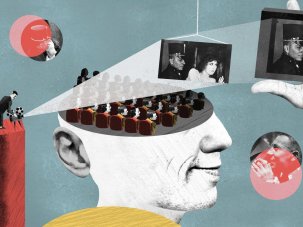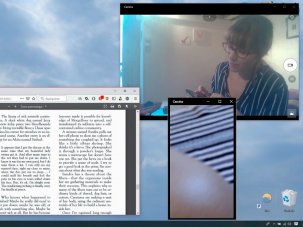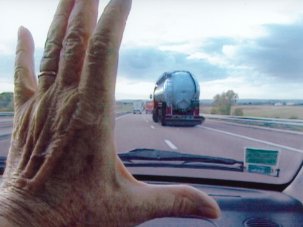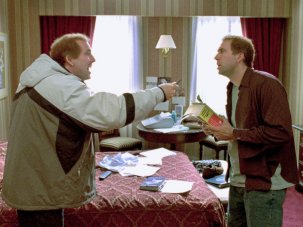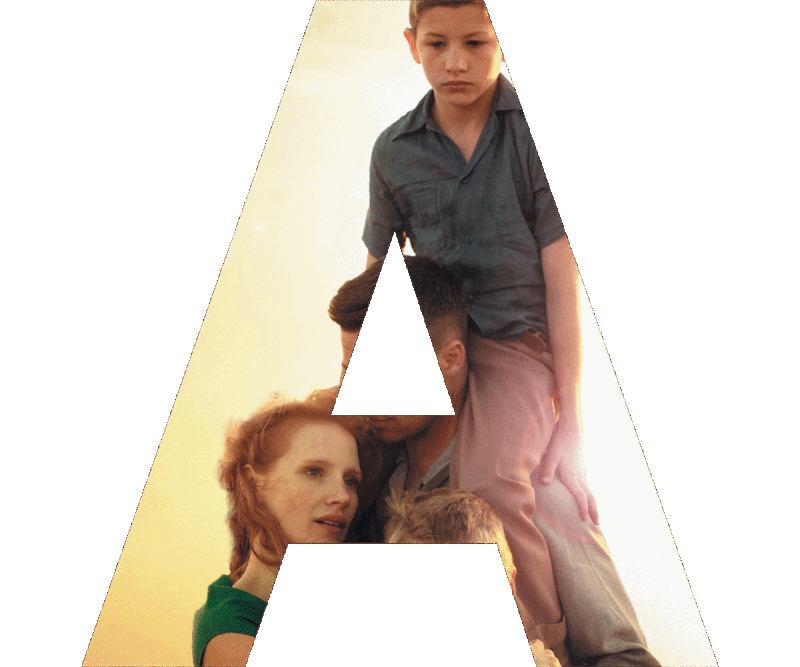
How to sum up the course of the movies across the 2010s? Did they march? Retreat? Sprawl? Transform? Surely some of all of that: in the decade of 4G camera phones and 4K TVs, of streaming video and social media and screens on every surface, technology rewrote the rules of the moving image as drastically as at any time since the advent of TVs – perhaps more, as any of us can now produce and distribute video images; we, and younger digital natives especially, are now in the age of Alexandre Astruc’s caméra stylo.
With private access to such an unprecedented mass of moving images, we all also became programmers and curators like never before, perhaps nudged along by algorithmic help: ‘viewers’, in the industry parlance, where once were ‘filmgoers’. And while cinemas may have found ways to run to stand still, there have been definite losses to some of our traditional modes of cinephile engagement, not least the collapse in subtitled filmgoing as an even semi-popular cultural pastime. How did this relate to our wealth of home-streaming options? And our populist politics?
Certainly, where technology rushed in, economics and politics quickly followed. For the entertainment multinationals, unchecked by enfeebled government, global eyeballs were the prize. Disney took a leaf out of Silicon Valley’s Book of Unregulated Monopoly and bought up two pop-cultural content powerhouses and one of its six studio rivals. Netflix won hearts and minds with a decidedly progressive approach to plurality on-screen and often behind the camera, suffering no hidebound presumptions about audience taste and tolerance.
Meanwhile social media offered different social groups the power of the crowd, whether righteous or baying; #Oscarssowhite, #MeToo and #TimesUp demonstrated that hashtags were the new, bottom-up soundbite and that abusers in high places could sometimes be weakened, while unjust practices from gender inequity to white- and cis-washing were named and shamed. Activism commingled with criticism, challenging and energising it while sometimes threatening to turn the art of evaluation into an accounting exercise – but the diversity numbers weren’t going to right themselves without a fight.
In short, it was a decade in which mono-culture collided with multi-culture, diversity with consolidation (in the UK, the BFI was reverse-merged into the UK Film Council to lead the nation’s film culture and industry – and used its power to pioneer and publish diversity analysis). Yet the push for inclusion came with a backlash, and around the world wherever the new populism took power it rapidly showed its censorious colours, with authoritarian governments locking down the internet, co-opting television and harassing independent filmmakers.
It was also the era of the listicle, in honour of which we decided to see if we could measure the decade across 26 letters of the Roman alphabet. The game may well have been a fool’s errand, and we found we’d boxed ourselves out of covering many other key people and phenomena, be they Dern or Driver, Haenel or Huppert, Peele or (Kristen) Stewart, Villeneuve or Wheatley, migration, horror… or indeed many of the terms discussed above.
But you don’t need us to tell you what we missed: you can tell us, by Twitter, Facebook, Instagram, email, snail mail…
— Nick Bradshaw
A is for Ava DuVernay
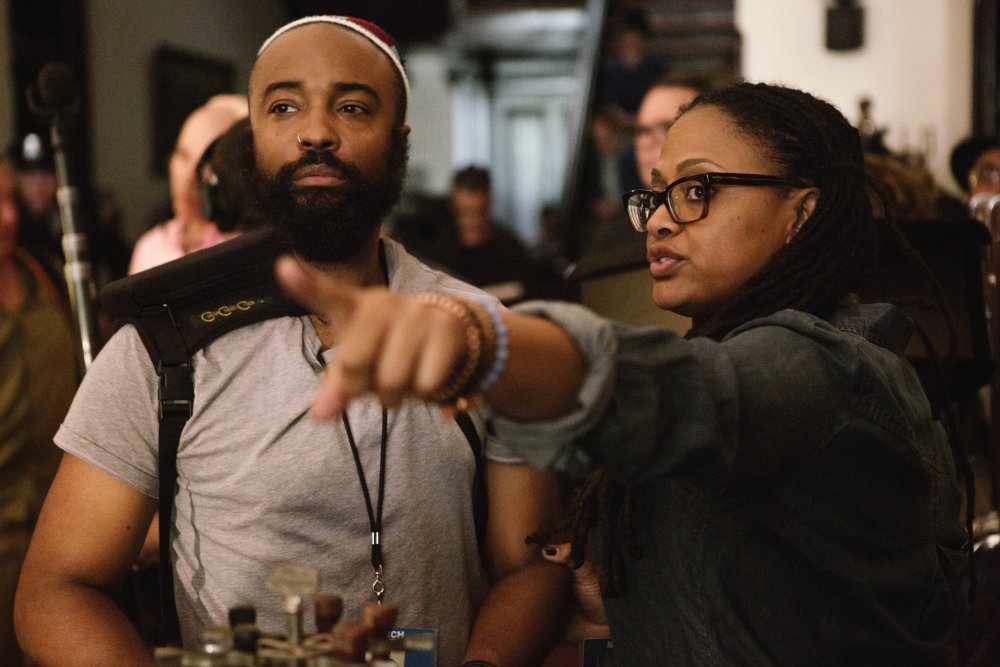
Ava DuVernay directing DP Bradford Young on the set of Selma (2014)
Artist. Activist. Advocate. Auteure. ARRAY founder, distributing and championing independent films by people of colour and women filmmakers globally. Academy Award nominee for Best Documentary Feature for 13th (2016); and for Selma (2014), the first film by a black woman nominated for Best Picture. African American woman filmmaker, the first to direct a live-action film with a nine-figure budget and to earn $100 million domestically, for A Wrinkle in Time (2018); the first to be nominated for the Golden Globe for Best Director, for Selma.
With a decade’s experience in film PR, and self-produced documentaries about Compton and alternative hip hop under her belt, in 2011 DuVernay wrote, directed and produced her first fiction feature, I Will Follow, using $50,000 of her own money. In 2012, another first followed as she became the first African-American woman to win the US Directing Award: Dramatic at the Sundance Festival, for her attention-grabbing second film Middle of Nowhere. As Ryan Coogler writes in his ode to the director he calls his “big sister,” “Ava is a pioneer. She makes the most distant dreams and ideas a reality… Ava is inclusion, equity and representation. Ava is the past, present and future. She is all of these things, but sometimes I forget she is human.”
While moving from chamber pieces to the huge canvas of Selma in 2014, DuVernay retained exactly the quality of humanity that marks her first films, an emotional intimacy that renders the fullness of black lives within an increasingly politicised framework. Both Queen Sugar (2016–) and mini-series When They See Us (2019) maintain this unity of the personal and political, reinventing televisual formats to award-winning effect. In the face of resurgent heteropatriarchy and white supremacy, DuVernay has altered the fabric of US visual media and our perception of filmmakers, unshakably.
— So Mayer
☞ Selma review: Martin Luther King leads his marchers onward
☞ The 13th review: Ava DuVernay shines a light on America’s slavery loophole
☞ Women with a movie camera
B is for Bridesmaids
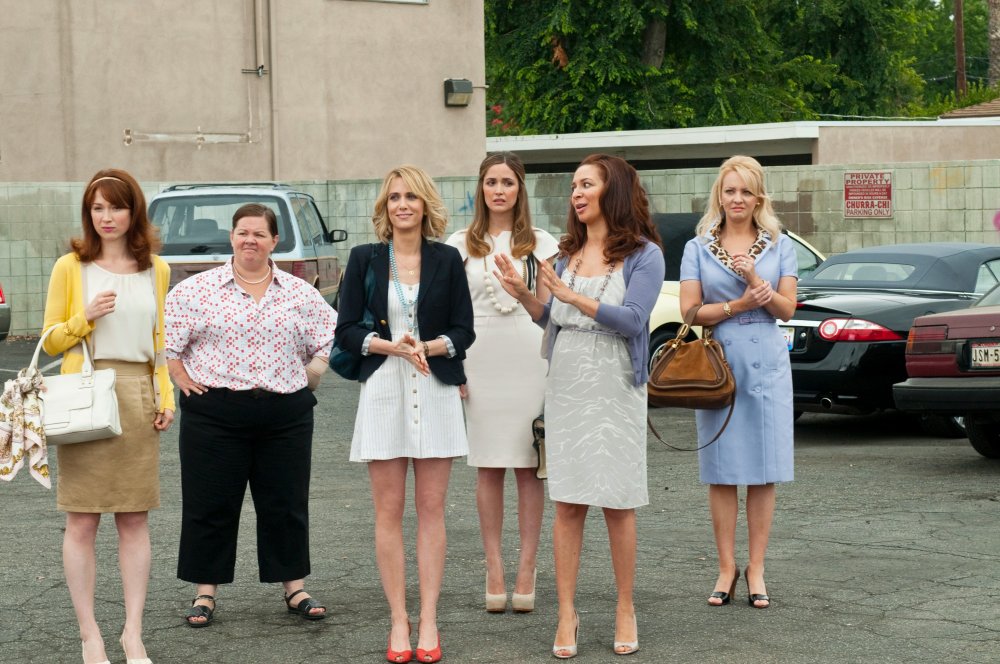
Bridesmaids (2011)
In 2011, SNL alumna Kristen Wiig co-wrote and starred in this fast-paced comedy about Annie, a chaotic thirtysomething woman playing “maid of dishonour” to her engaged best friend Lillian (Maya Rudolph), and pratfalled her way to a genuine pop-culture moment. As a riposte to the romcom, Bridesmaids may have been a case of having one’s elaborately frosted cupcake and eating it too, but as a female-oriented rejoinder to the bloke-heavy world of Hollywood comedy, it was the perfect Hangover cure. Bridesmaids aced the Bechdel Test by relegating the men to supporting players (Jon Hamm appeared uncredited) and focusing on the relationships between the women. It also offered proof, if it were needed, that women could tackle gross-out comedy every bit as well as the guys, notably in one memorably elongated food-poisoning scene set in an upscale bridal boutique. It was, one can’t avoid mentioning, directed by Paul Feig and produced by Judd Apatow.
Audiences loved Bridesmaids’s mix of female solidarity and outrageous pranks, boosting it to around $288 million at the box office, on a budget of $32.5 million. The screenplay received an Oscar nomination, as did Melissa McCarthy, who had a breakout supporting role as the uninhibited Megan. McCarthy went on to have a fairly high-profile decade, often in collaboration with Feig, starring in blockbuster comedies such as The Heat (2013) and Spy (2015).
Other stars felt the Bridesmaids effect to a greater or lesser extent, but its real impact was measured by the slew of female-focused comedy romps that followed, from Pitch Perfect (2012) to the Ghostbusters reboot (2016) and, arguably, the wedding-prep shenanigans in Crazy Rich Asians (2018) – not to mention a clutch of raunchy comedies of female self-improvement, epitomised by Apatow and Amy Schumer’s Trainwreck (2015). Not all of its descendants had such a close family resemblance – the shadow of Bridesmaids falls over such disparate decade-defining hits as Lena Dunham’s Girls series (produced by Apatow) and the ice-breaking success of the Frozen films. Thanks to Bridesmaids, perhaps, execs were happier to take a punt on female comic talent, even when they weren’t battling to out-ick their male counterparts.
— Pamela Hutchinson
☞
☞
☞
C is for class
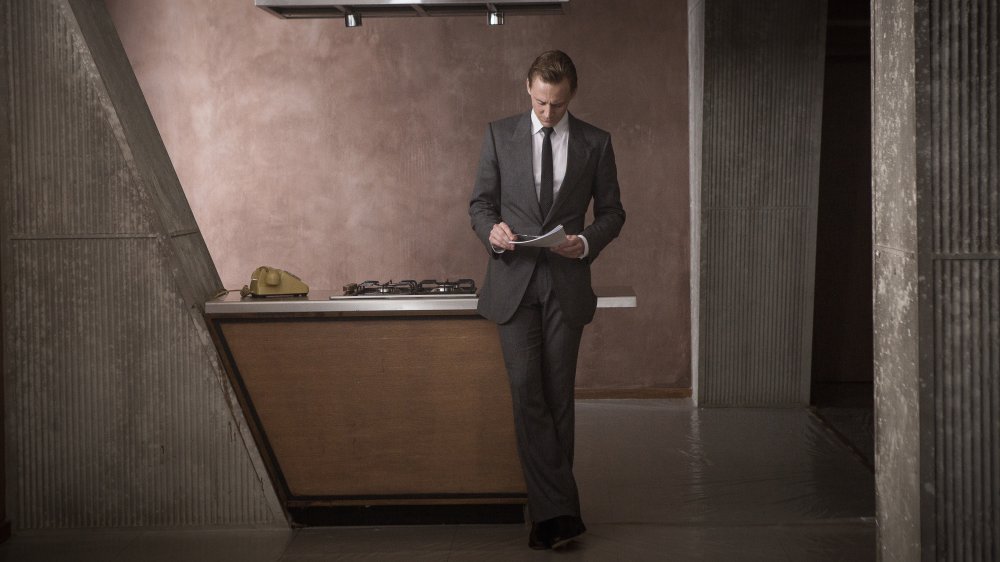
High-Rise (2015)
Are we really all in it together, as the UK’s former chancellor George Osborne liked to insist (before swinging into ditties about strivers and skivers, workers and shirkers)? Voters around the world haven’t been so certain; indeed social media seems to see to it that we’re not. Nor have filmmakers been persuaded: witness the end-of-decade rise of anti-elite agitations with titles like Greed (2019), Parasite (2019) and Burning (2018). Jordan Peele’s Us (2019) used the horror genre to uncover an entire shadow class of our indentured doppelgängers; on TV, Succession (2018-) lampoons the meritocratic myths of the entitled class, with their heads in the cloud and their feet on the gas.
In the UK, Ken Loach memorialised the welfare state in The Spirit of ’45 (2013) before returning to contemporary terra povera with the denunciatory I, Daniel Blake (2016) and Sorry We Missed You (2019), mirrors of the literal-minded politics of his ally Jeremy Corbyn. (In France, Stéphane Brizé’s The Measure of a Man (2015) dramatised the collapse of social solidarity with similar sharp anger.) Clio Barnard found a more poetic slant on the kitchen sink tradition with The Arbor (2010) and The Selfish Giant (2013). Andrea Arnold took her quicksilver energies to the US heartlands with American Honey (2016), high rolling with a footloose new generation of American salesmen/dreamers; Sean Baker traced similar hardscrabble energies amongst the precarious in Tangerine (2015) and The Florida Project (2017). Martin Scorsese’s red-toothed satire The Wolf of Wall Street and Adam McKay’s didactic expose of groupthink The Big Short (2015) were the Hollywood exceptions to the rule of shunning the financial crisis as a subject. Meanwhile it was the poorest fringes of Europe that attacked the class politics of the Crash and its victims with the greatest formal verve: Yorgos Lanthimos’s Dogtooth (2009, but we’re having it); Miguel Gomes’s Arabian Nights triptych (2015).
Cinema struggled to describe or distil the Occupy movement and its levelling ideals of decentred power (Bong Joon Ho’s Snowpiercer was the rare film to play inequality horizontally, on a speeding train). By contrast, the housing crisis was a cinch, thanks to the power of the upstairs/downstairs metaphor (cf: Parasite). Kleber Mendonça Filho made his mark in Brazil (and an enemy of the country’s resurgent reactionaries) with his upscale-home fables Neighbouring Sounds (2012) and Aquarius (2016). British TV did some shirking of its own with Downton Abbey and Benefits Street, but on the independent screen Andrea Lula Zimmerman made space for gentrification’s tower-block victims in Estate, a Reverie (2015) and Here for Life (2019). As empty money boxes for the rich arose, high-rise housing for the poor had to come down, David Cameron told us: it was “no coincidence” that three-quarters of the UK’s 2011 rioters came from sink estates (and as the decade ended, the Leader of the House implied that more intelligence would have saved the victims of the Grenfell Tower fire). Last word, then, goes to Ben Wheatley’s refitting of J.G. Ballard’s urban-dwelling fable High-Rise (2015) for the screen – not so much pithy satire as a broiling vision of Downtown Abbey gone Dante’s Inferno.
— NB
☞ Twenty per cent less hope: the very English satire of Succession
☞ High society: Kleber Mendonça Filho on the architecture of loathing
☞ The evolution of High-Rise, from sketchbook to screen
D is for Disney
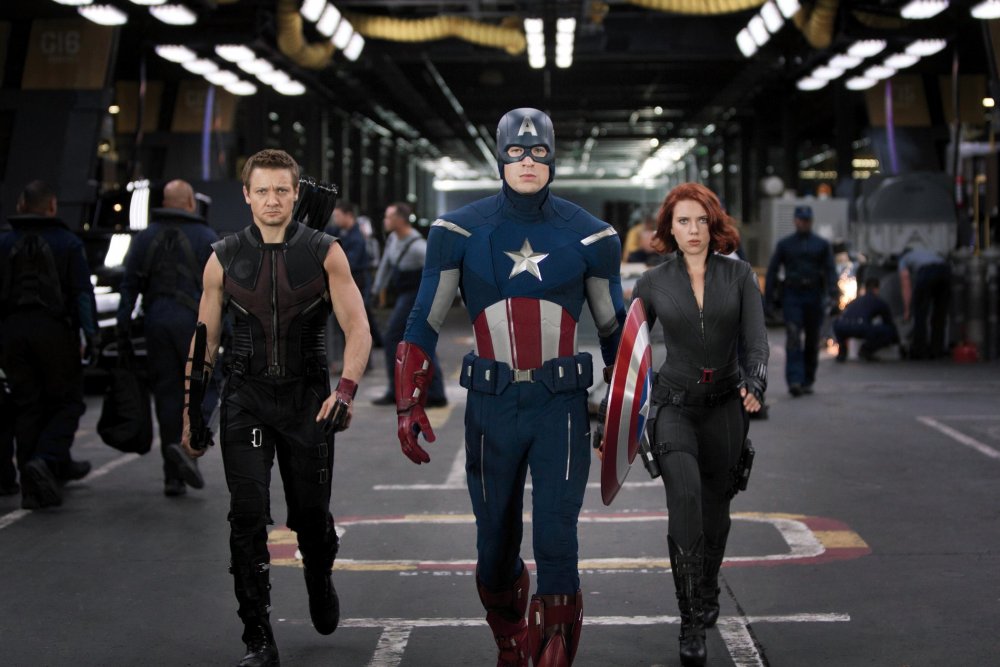
Avengers Assemble (2012)
It was Disney’s decade, the rest of us are just choking on the popcorn. Of the ten highest-grossing films at the US box office in the 2010s, only one was a non-Disney affiliated title – Jurassic World, coming in at number five. The rest of the top ten features a Pixar animation (2018’s Incredibles 2), two Star Wars sequels and a spin-off (Rogue One, 2016), four dispatches from the Marvel Cinematic Universe and one much-despised remake of one of the studio’s most enduring favourites, The Lion King (2019). (The next 20 in the list include another 12 Disney titles.) This global dominance suggests a studio not just adept at crafting crowd-pleasing blockbusters, but a certain canny thrift when it comes intellectual property. There’s not one standalone title in that list.
Bob Iger, who became CEO of in 2005, has overseen massive expansion of the company’s portfolio, including the purchase of Marvel Entertainment in 2009, Lucasfilm in 2012 and the opening of the first Disney resort in China in 2016, not to mention buying up 20th Century Fox early this year. With this shopping haul, the Disney conglomerate has a grasp on the global citizen’s leisure hours that might make the backlash against Martin Scorsese’s demurrals seem more like an expression of Stockholm Syndrome than intellectual disagreement.
— PH
☞ An open letter to Bob Iger, chief executive, The Walt Disney Company, from Mark Cousins
☞ I sing the body elastic: a lament at the straightening of superheroes
☞ Star Wars: Episode VII – The Force Awakens review: J.J. Abrams brings her in safely
E is for event cinema
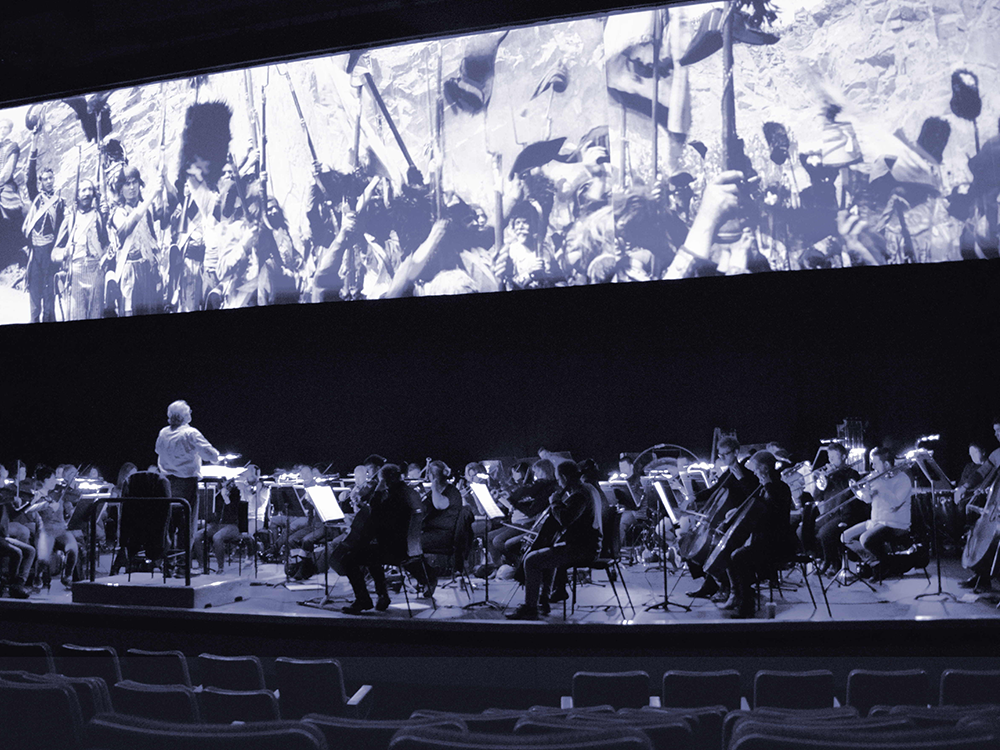
Carl Davis and the Philharmonia Orchestra rehearse for the Napoleon screening at Royal Festival Hall in November 2016
Credit: Courtesy of Tim Everett
It makes sense that in the age of streaming, going to the pictures became a big deal. And the 2010s saw a rise in new ways to make the act of watching a film more of an event, with a higher ticket price. Fabien Riggall started Secret Cinema in 2007 with the mission to replace the banality of a multiplex visit with something more exciting and participatory. As the decade began it was staging cult site-specific screenings of movies complete with themed menus and actors interacting with the public in character – the meeting point of immersive theatre and a picture show. The twist was that punters were not told what the film would be in advance, only drip-fed hints and instructions, before spending the evening somewhere between an audience member and an extra for films from The Battle of Algiers to The Grand Budapest Hotel.
As it grew in popularity, Secret Cinema lost its mystery, announcing the titles in advance, and while its large-scale plans for nights devoted to Back to the Future and Brazil were plagued by cancellations, the company continues to lead the way in this field.
It wasn’t all fancy dress. The revival in screenings of silent cinema with live orchestral music grew alongside the rise of eventised cinema, reaching its highest peak with screenings of Abel Gance’s silent epic Napoléon selling out around the world. The talkies took note and fully sound films from James Bond to Harry Potter were shown in concert halls with an orchestra providing a bombastic soundtrack – a tribute to the power of a good film score and to the appeal of live entertainment. And as the next entry in this list shows, the 2010s saw a resurgence in the ‘roadshow tour’ of celluloid prints, which goes to show that anything other than a routine digital projection now qualifies as an event.
— PH
☞ Out of this world: Secret Cinema takes flight
☞ A monumental reckoning: how Abel Gance’s Napoleon was restored to full glory
F is for film-as-film

Dawson City Frozen Time (2016)
Credit: Kathy Jones Gates
Perhaps it’s true that you don’t know what you’ve got ’til it’s gone – but in this perverse decade, as digital more or less completely knocked analogue film out of the game, that reel feeling became a popular fetish. Both as a borrowed aesthetic and as an actual substance, film is back on an upswing, thanks to cinephile auteurs and grass-roots programmers.
In 2014, Kodak was the last company manufacturing analogue film, and it was on verge of quitting itself. Then the mood of nostalgic movie-lovers was lifted by reports that a group of directors including Quentin Tarantino, Christopher Nolan and J.J. Abrams had somehow struck a deal between the Hollywood majors and Kodak – whereby the studio would keep buying celluloid as long as Kodak manufactured it. Now, while digital filmmaking dominates Hollywood and digital projection rules at the multiplex, there are a number of hefty outliers. Tarantino’s The Hateful Eight was shot on 65mm film and offered in widescreen projection at roadshow screenings, while the director told this magazine “If you paid money to see the 70mm version, you’re mine.” The Hateful Eight joined a coterie of films including Paul Thomas Anderson’s Phantom Thread and Nolan’s Dunkirk that were also given limited, but much trumpeted, 70mm releases.
Few filmmakers could shoulder the financial cost of such large-scale filming on large-format film, but plenty of independent filmmakers, from Kelly Reichardt and Todd Haynes to Hungarian wunderkind László Nemes, stayed true to 16mm whenever they could. Indeed the 2010s saw a phalanx of films shot in , or even silent, suggesting that the look of film offered something digital maximalism could not. Artists like Ben Rivers flew the flag for the wild intimacy of artisanal celluloid, anticipating Mark Jenkin’s recent theatrical hit Bait – a narrative feature shot on a 1970s Bolex without synch sound; and and Bill Morrison’s 2016 documentary Dawson City: Frozen Time hymned the (perishable) joys of nitrate.
Speaking of which, there’s now an entire festival at the George Eastman House dedicated to projecting nitrate (The Nitrate Picture Show), swelling the healthy archive-print cinema circuit, which has small-scale programming outfits as such as London’s Badlands Collective at one end, and international events such as Il Cinema Ritrovato and To Save and Project at another.
— PH
☞ Celluloid haven: Close Up Cinema
☞ Raiders of the lost film archives: digging for movie history in Dawson City, Frozen Time and Notfilm
☞ Encounters with celluloid: Bronco’s House and the film revival
☞ The smouldering screen: Kevin Brownlow on the lustre of nitrate
G is for Greta Gerwig
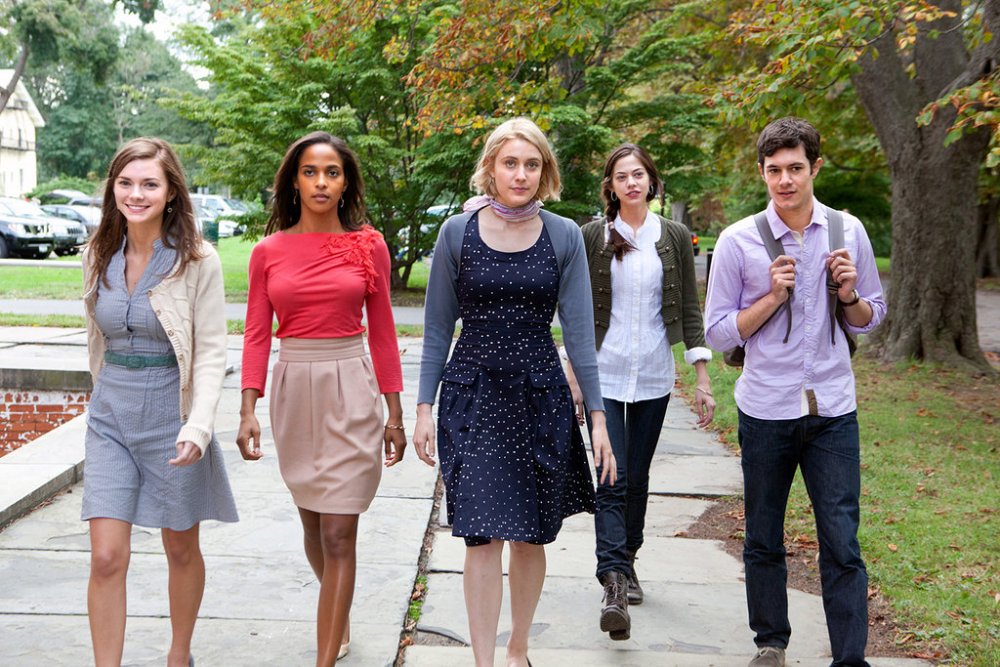
Damsels in Distress (2011)
If one of the stories of the decade was that actresses were no longer prepared to put up with the dearth of good roles, and started writing and directing themselves, no one exemplified this more, and blazed a brighter trail, than Greta Gerwig. In 2010 the 26-year-old filmmaker left behind low-budget mumblecore, playing the gentle foil to Ben Stiller’s depressive in Greenberg (her first collaboration with future writing partner and husband Noah Baumbach) and, even more memorably, the tap-dancing campus queen giving men makeovers in Damsels in Distress.
After dipping a toe into mainstream Hollywood (the romcom No Strings Attached and Russell Brand’s version of Arthur), she chose to write her own characters rather than be numbed by such single-note marginal roles. Finally Frances Ha, a radiant New York-set tale of two female friends breaking up, flexed the full range of her fast-paced screwball zaniness on and off camera while capturing a very millennial sense of loneliness and frustration at your life going nowhere. Mistress America was further proof of her wit and command over breakneck dialogue. It also widened her persona. Here she picked the unexpected role – not the hipster lost soul but the dynamic overachiever.
Gerwig’s solo directorial debut Ladybird was a coming of age tale that showed off her knack for creating charismatic comic heroines but also for realistically capturing family life in all its thorniness. As the #metoo movement gathered pace, here was a film that refreshingly prioritised its young protagonist’s relationships with her mother and best friend over her romantic entanglements. Gerwig ended the decade returning where she started: mainstream Hollywood, but this time it was to direct a major studio picture, Little Women, and remarkably she did so on her own terms, boldly reimagining Louisa May Alcott’s beloved novel while keeping all of her – and Gerwig’s – free-spiritedness in tact.
— Isabel Stevens
☞ Frances Ha review
☞ Mistress America review: a sparkling screwball of female friendship
☞ Lady Bird review: Greta Gerwig sketches scenes from an awkward adolescence
☞
H is for Tom Hiddleston
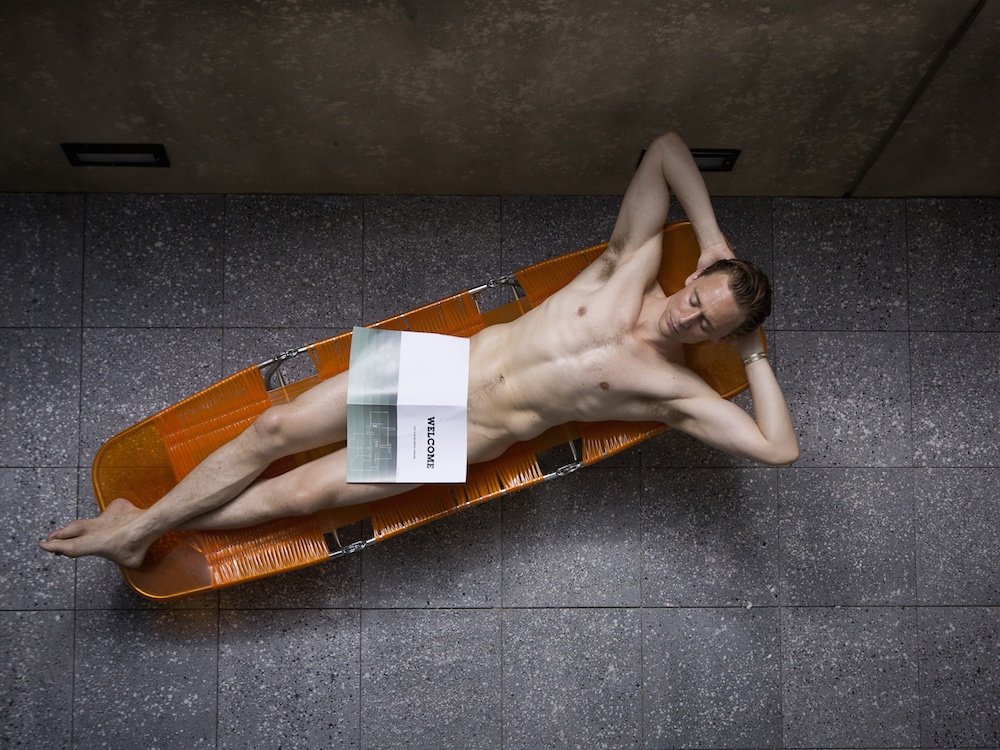
High-Rise (2015)
Tom Hiddleston entered the 2010s with two movie credits to his name – the leads in Joanna Hogg’s Unrelated and Archipelago – plus a sprinkling of TV, from Casualty to Kenneth Branagh’s Wallander. Three years later he’d starred for Steven Spielberg, Terence Davies, Woody Allen and Jim Jarmusch – playing two ill-fated English military men in War Horse and The Deep Blue Sea, F. Scott Fitzgerald in Midnight in Paris and a boho vampire in Detroit in Only Lovers Left Alive – and hitched his particular blend of blue-blood vim and vulnerability to the Marvel Cinematic steamroller as Loki, the demi-villain who could.
That the swift rise of Hiddleston, his War Horse/Marvel co-star Benedict Cumberbatch and Eddie Redmayne coincided with the similarly well-bred new UK government and its welfare-hammering policies (see: C is for class) occasioned some hand-wringing about the country’s narrowing chances for social mobility, but Hiddleston put his impossible charms to fine use playing social climbers and brinksmen in Guillermo del Toro’s Crimson Peak (a depraved lord of the manor), a sanguine surgeon in Ben Wheatley’s sci-fi blow-out High-Rise, and not least an avenging hotelier undercover amongst the jet set in Susanne Bier’s le Carré TV adaptation The Night Manager, in which his battle of poker faces with Hugh Laurie’s suave arms dealer was the principle engine of the series’ tension. He also demonstrated his comedic voice talents playing the snooty kleptocrat Lord Nooth in Nick Park’s stop-motion Early Man.
Later in the decade he found himself navigating the cross-currents of tabloid fame after an apparent break-up with Taylor Swift; there was a jungle foray throwback in Kong: Skull Island, and three more turns as Loki as the Marvel stock company rallied to an endgame. (And next: a Loki limited series for Disney+.) But he was otherwise on sabbatical from the big screen, hitting the stage as Hamlet for Branagh and as the cuckold in Harold Pinter’s Betrayal. We look forward to seeing him back (a Frank Miller adaptation with Ben Wheatley and Richard II Forma James Ivory are planned).
— NB
☞ The Night Manager: shaken, not stirred
☞ Thor: Ragnarok review: Marvel’s skies brighten
☞ Tom Hiddleston becomes founding BFI Ambassador
I is for immersive technology
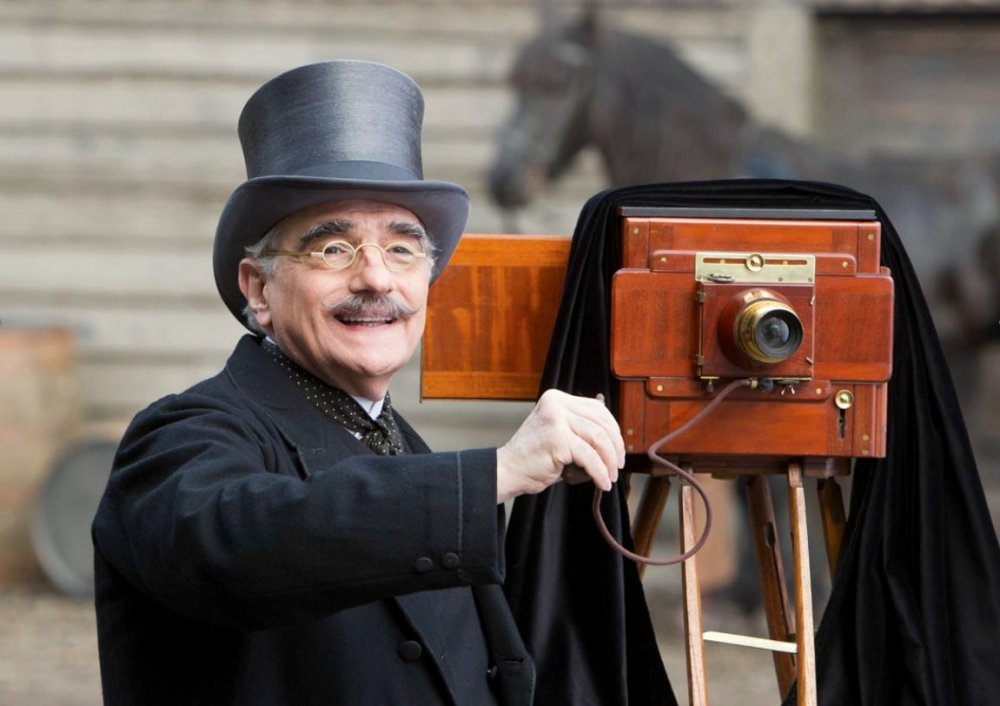
Martin Scorsese on the set of Hugo (2012)
In the 2010s, technology aimed to offer inescapably immersive experiences, perhaps as ballast to the rise of CGI and its assault on the traditional indexical image. After 2009 saw the first R-rated horror films to be released in 3D, stereoscopy soon spread beyond the blockbuster – even classicist Martin Scorsese used the technology to evoke the thrill of early cinema in Hugo (2011), his love-letter to Georges Méliès, while veteran iconoclast Jean-Luc Godard messed with it in 2014’s Goodbye to Language. In documentary, Wim Wenders’ Pina (2011) used the format to enhance the performance of the German choreographer Pina Bausch’s work, and Werner Herzog used it to simulate access to the off-limits Chauvet cave paintings in Cave of Forgotten Dreams (2010); while Gaspar Noé’s ‘Love’ (2015) took the technology to more private places with an explicit, and apparently unsimulated, 3D sex scene. More recently, Bi-Gan’s Long Day’s Journey into Night (2018) featured a near hour-long unbroken take shot on a RED 3D camera.
The experiments didn’t stop there. Not only did Peter Jackson retrofit silent footage from WWI with colour and 3D in 2018’s They Shall Not Grow Old, he introduced a doubled frame rate of 48fps for 2012’s The Hobbit (and its sequels) to reduce imperceptible flicker. Ang Lee, hot off the 3D CG experiment Life of Pi (2012), deployed the higher frame rate for his Billy Lynn’s Long Halftime Walk (2016) and Gemini Man (2019) to little enthusiasm from critics, and James Cameron plans to enhance his Avatar sequels likewise.
Alongside these relatively conventional techniques, Virtual Reality filmmaking continues its unsteady rise. While the headsets have not yet provided a breakout feature-length hit, this technology is championed by dedicated strands at festivals from Venice to Sheffield and continues to engage, if also to perplex, movie critics.
— PH
☞ Lessons from Gravity: the state of 3D cinema
☞ 4DX: Here come the feelies
☞ They Shall Not Grow Old review: Peter Jackson brings controversial colour to WWI footage
☞ Fantastic voyages: how VR became a reality
J is for Dwayne Johnson
Dwayne Johnson spent the 90s as a WWE star and the noughties as a Hollywood heavy before graduating in the 2010s as a full-on global icon, leading blockbuster comedies and action franchises. He’s now regularly named in the annual highest-paid actors lists and there’s only one place for such a big star to go next. Every time Johnson jokes about running for president on Saturday Night Live, is pestered about it in interviews or ponders it on Instagram, the idea of The Rock in the Oval Office becomes more plausible – as if we need another celebrity holding the nuclear football.
Johnson’s very modern appeal stems from a combination of a rigorous work ethic, an improbably muscular physique and a deadpan sense of humour betrayed by his famously quizzical eyebrow. He’s as charming as any other movie star but far more wholesome: his glowing skin and bursting biceps speak of a daily regime of green smoothies and multiple gym workouts.
And he has been brand-building from day one. In the pro-wrestling days he talked about himself in the third person while crowds relished his catchphrases and signature moves – now he has a multi-layered, ironic screen persona that bounces between the sincerity of Dwayne Johnson and the campery of ‘The Rock’ and increasingly alights on his Samoan-American heritage. Who needs political clout when Disney has already immortalised you as a demi-god?
— PH
☞ Fighting with My Family review: an irresistible wrestling family comedy
K is for Kickstarter
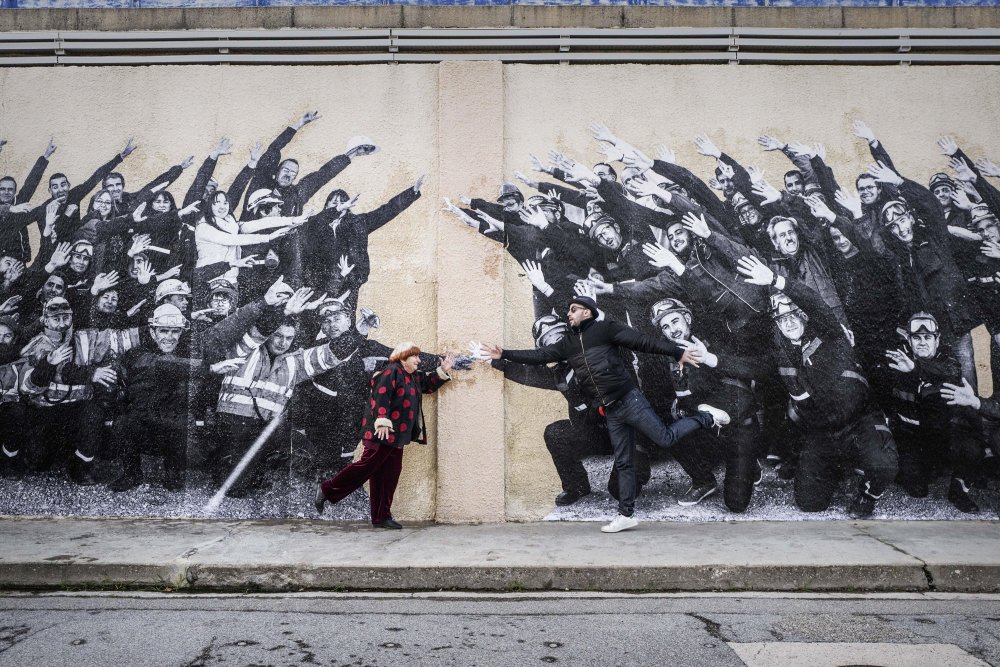
Faces Places (Visages Villages, 2017)
Time was, micro-budget hits from Clerks to The Blair Witch Project were funded by the filmmakers’ maxed-out credit cards.
In the post-crash 2010s, aspiring producers reached out to the public instead. Crowdfunding site Kickstarter was founded in April 2009 and soon the New York Times was calling it “the people’s NEA” [National Endowment for the Arts]. Over the course of the decade, filmmakers with or without impressive resumés would post potential projects on Kickstarter or similar sites, offering rewards to those who pledged to support their projects. The result? Independently produced movies with ready-made hyper-engaged audiences, and long scrolling lists of ‘backers’ at the end of the credits.
It’s a high-labour, high-risk, high-stress funding model, one that filmmakers only turn to when studio support is not forthcoming, but it has had some high-profile successes. Notable crowdfunded hits include the acclaimed documentary David Lynch: the Art Life (2016), comic Jay Chandrasekhar’s comedy sequel Super Troopers 2 (2018) and critical favourite Jim Cummings’s Thunder Road (2018), the feature-length spinoff of the director’s prize-winning short of the same name. In 2013, Shawn Christensen’s Indiegogo-backed short film Curfew became the first movie to win an Oscar, and crowdfunded documentaries including Jehane Noujaim’s The Square (2013) and Agnés Varda and JR’s Faces Places (2017) have been nominated for Academy Awards since.
Browsing film projects asking for funding on Kickstarter right now you’ll find a mixture of the feasible and the fanciful, but crowdsourcing’s track record speaks for itself. The question is, how many times can a filmmaker draw from this well of financial goodwill?
— PH
☞ Crowdfunding it for themselves: Deep in Vogue, Shakedown and queer dance on film
☞ Faces Places review: Agnès Varda pastes her playfulness over French landscapes
☞ Thunder Road review: American indie portrait of a policeman on the verge of a nervous breakdown
L is for lists
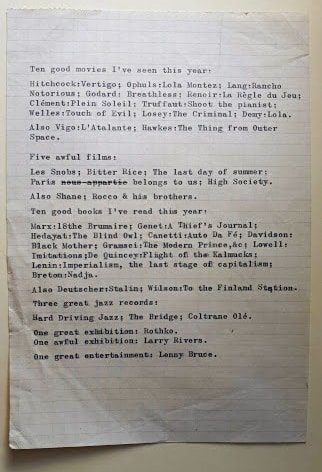
‘Ten good movies I’ve seen this year’: a note in Peter Wollen’s records in the BFI National Archive
Lists are everywhere – you’re in the middle of one right now. In fact, this article could be termed a listicle, a coinage that first appeared in the noughties but soared in popularity in the 2010s. At the other end of the spectrum is the canon-building work of list-compilation done by academics and critics, such as this magazine’s own annual surveys and .
It’s now hard to imagine a simpler world in which cinephiles happily ticked off film titles in the indexes of Halliwell’s or 1,001 Films to See Before You Die. Just as online attention spans are perfectly suited to list consumption, social media is the ideal arena in which to tear them to shreds. For every reader who relishes the list’s appearance as a prompt for further debate there are those who regard them as the worst kind of gatekeeping, solidifying artistic biases into definitions of what is and isn’t Cinema-with-a-Capital C.
Do we need more lists to repair the damage done by the old lists? Lists that exclude the groups that dominate the old lists? Lists of the lists you should avoid? I’ll stop before this becomes another one. At the close of 2019, Elena Gorfinkel argued in Another Gaze that lists were “an anti-film politics” that “colonise the mind and impoverish the imagination”. In the 2020s, will we find a way to recognise excellence without forming hierarchies, or will the process of ranking continue to rankle?
— PH
M is for for #MeToo
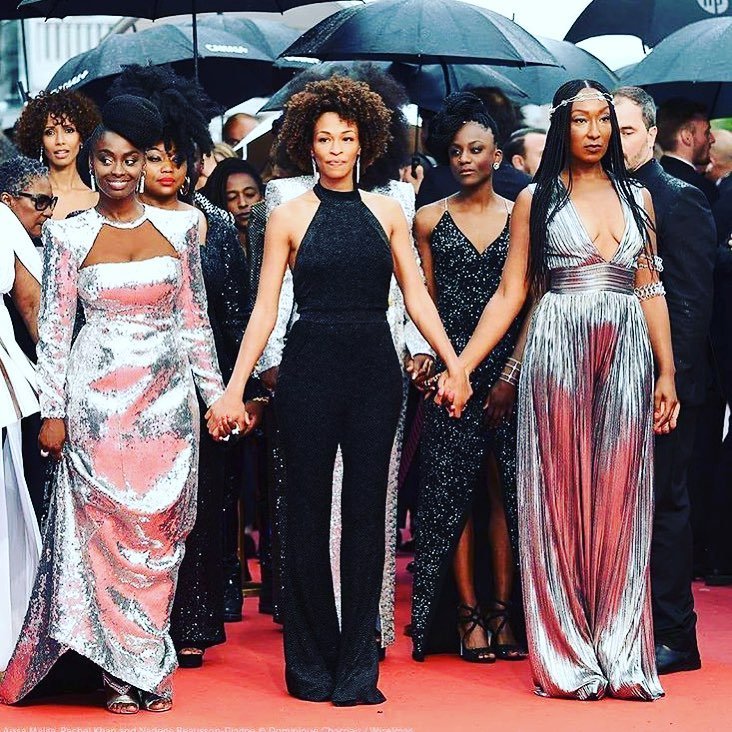
Credit: instagram.com/5050x2020
The current set of allegations against Harvey Weinstein didn’t begin to break until 2017, but the rumours around him, and many of his peers in the film industry, went back for decades. That’s why, when actress Alyssa Milano took Tarana Burke’s ‘me too’ activism to social media, tweeting “If you’ve been sexually harassed or assaulted write ‘me too’ as a reply to this tweet”, the floodgates opened. People from all industries shared their experiences, and their solidarity, including some famous names from the film world whose accounts implicated well-loved stars, producers and directors. Grim casting-couch encounters emerged alongside harrowing tales of assault, rape and abuse on set. Years of sleazy anecdotes about lascivious producers and pretty starlets were revealed as a mask for demeaning, violent practices that took place in plain sight.
While there has been a certain amount of reputation damage, there have been few convictions as yet (criminal charges against Kevin Spacey were dropped, Weinstein is still awaiting trial). However, the impact of this burst of truth-telling reverberates across the industry. There are post-me-too movies, from Bombshell to the forthcoming Promising Young Woman, but there is also real work being done. Among a slew of other initiatives the Time’s Up movement has combined eye-catching red-carpet stunts with ground-level work to make the film industry a safer and more equitable place – from more diverse recruitment policies to protocols for shooting sex scenes. The changes are long overdue.
— PH
☞ Women on Film – all our coverage
☞ Breaking the silence: Hot Docs 2018 addresses the #MeToo moment
☞ Raze the red carpet: Cannes 2018 responds to #MeToo
N is for Netflix
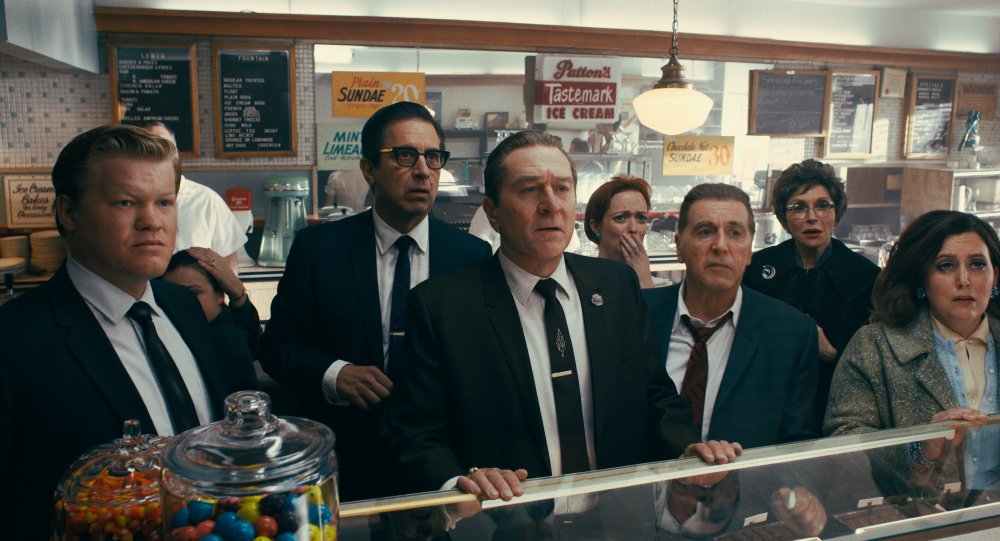
The Irishman (2019)
Or how an online video shop became the producer of auteur-driven Oscar contenders. It’s been a hell of a decade for Netflix. In 2007, the online DVD sales and rental business opened its streaming platform with around 1,000 titles. By the turn of the decade, disc sales were down across the board and the site was offering more than 12,00 titles on-demand. Further, Netflix, which had once been the US Postal Service’s fastest-growing first-class customer, was instead responsible for the biggest chunk of internet streaming every evening in North America. Now Netflix represents a third of all US prime-time download traffic and boasts over 148 million paying subscription customers worldwide, having expanded into 150 countries.
How did Netflix achieve such strong numbers? At first it was thanks to its cinematch algorithm, which was adept at recommending less well-known movies and programmes to users. But in 2011, Netflix also started buying original content, such as House of Cards, and Orange Is the New Black, which the company describes as its most-viewed own show, despite an aversion to releasing streaming statistics for individual titles. (Buy-ins like The Office and Friends were still its biggest tickets.) Then Netflix started producing its own series with 2012’s Lilyhammer. Filmwise, the firm’s acquisition of Alfonso Cuaron’s breakout hit Roma last year led to a lot of hand-wringing about the death of the big-screen communal cinema experience, but also set the scene for its current enviable slate of heavyweight movies as the decade ends, including The Irishman, Marriage Story and Uncut Gems.
While the market is crowded with competitors, Netflix remains market leader despite its heavy debts, if only for having inspired the phrase ‘Netflix and chill’, which memorably became a euphemism for sex at the height of a decade devoted to binge-watching.
— PH
☞ The Crown: Peter Morgan’s majestic Windsor saga
☞ Martin Scorsese on The Irishman: the Sight & Sound Interview
☞
O is for open archives
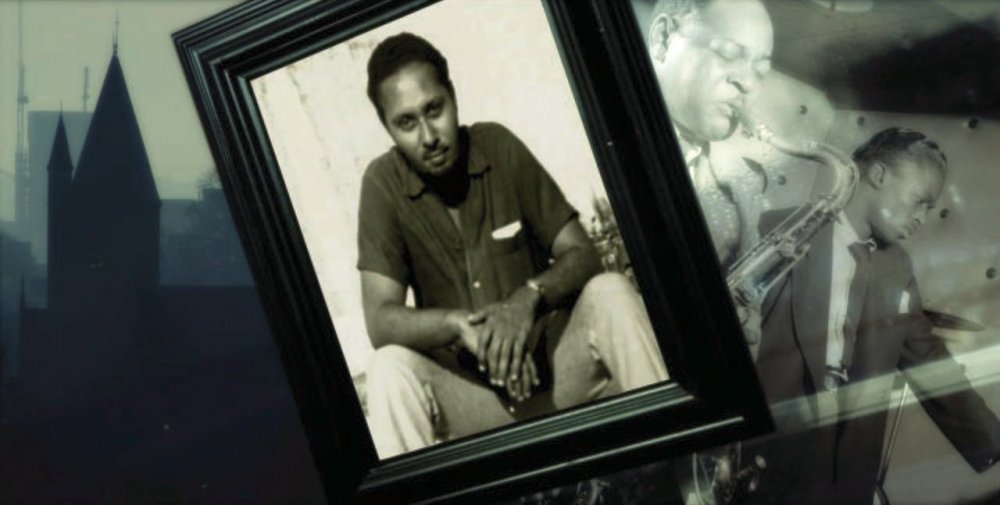
The Stuart Hall Project (2013)
In the decade now closing, the internet seemed to finally deliver on its promise to take culture online and freely available to all. Increasingly, film and print material is being digitised and uploaded by libraries and archives, which represents a boon to scholars and fans both. Trailblazing 1990s sites such as archive.org and Project Gutenberg were joined by hundreds more, and in tandem with the growth of streaming sites for contemporary content, the material is being made available outside institutions to the general public, via searchable, playable platforms such as the BFI’s own BFI Player or the Media History Digital Library’s Lantern search engine, which offers access to decades of evocative film magazines.
With the cinematic past apparently closer to hand than ever before, filmmakers have made use of the archive to convert archives into new narratives. In the UK, Terence Davies’s contemplative, personal Of Time and the City from 2008 set a template of sorts for refracting the archive through a new lens, to be followed by super-cut archive documentaries such as Penny Woolcock’s From the Sea to the Land Beyond (2012) and Kim Longinotto’s Love Is All (2015), which boosted the profiles of archive collections while offering a commentary on the content. (Adam Curtis meanwhile continued his own iconoclastic dig through the BBC archives.) In Cambodia, director-cum-national film preservationist Rithy Panh used archive footage to retell his country’s troubled history in documentaries The Missing Picture (2013) and France Is Our Mother Country (2015).
Increasingly the archive begins online, though, as in Kevin Macdonald’s 2011 film Life in a Day, which was built from a collage of clips submitted to YouTube. With social media users capturing incriminating screenshots and the Wayback Machine storing deleted webpages, our online histories become another cache to be plundered. Perhaps the next Catfish (2010) won’t be captured in real time, but via the recall of the archive search engine.
— PH
☞ Rick Prelinger: We have always recycled
☞ The future is behind you: Penny Woolcock and British coastal life on film
☞ Rewind Fast Forward: Sandi Hughes’s radical film archive
☞
☞ Explore free archive films on BFI Player
P is for peak TV
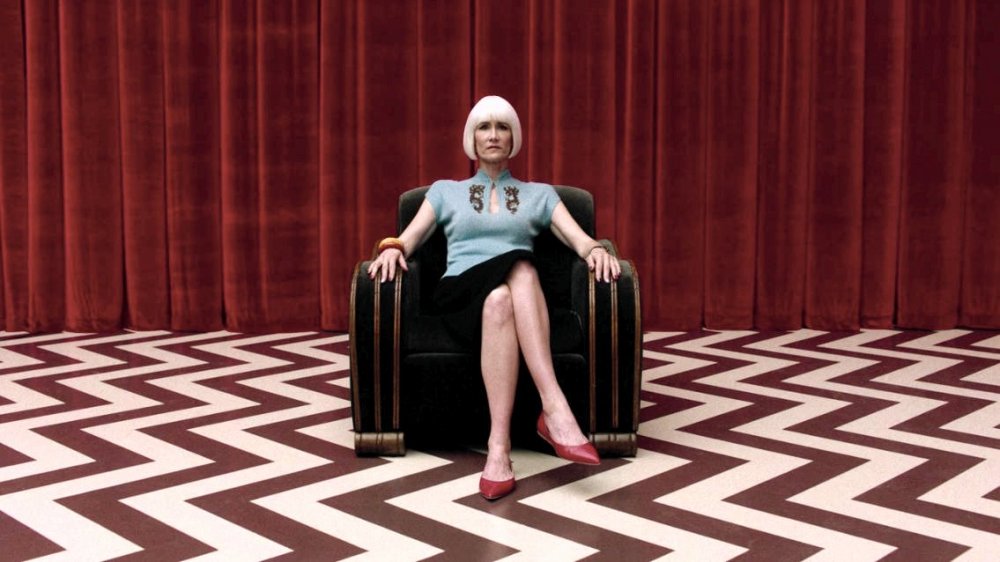
Twin Peaks: the Return (2017)
No one is quite sure whether we’re in the second or third Golden Age of TV, or when this one might have started – perhaps the previous decade, with the ‘prestige TV’ accomplishments of The Sopranos and The Wire, when HBO strode the field unchallenged. That, thanks to the DVD box set, was also the beginnings of binge TV, a phenomenon that has only increased with the advent of internet streaming on demand. FX CEO John Landgraf offered up the phrase ‘peak TV’ in 2015; like ‘late capitalism’, it begs the question ‘how can you be sure?’ (and faced with the multi-billion punts on the subscription jackpot now being placed by the incoming Apple, Amazon, Disney and others, Landgraf has revised his term, harking instead to our wider socio-economic moment with the phrase ‘gilded TV’).
Still, ‘peak TV’ certainly captures the mix of quality and quantity, abundance and threat pumping through our silicon screen networks. Who can keep up?, goes the cry. In the US, the number of original scripted series last year hit 532, from little over 200 a decade before, with the majority now served up by streaming services; it seems so much more than just seven years ago that Netflix took its first big swing at original series with House of Cards. The new gold standard was HBO’s all-conquering fantasy Game of Thrones (2011-19), but series TV was also able to represent multitudes, from early statements of diverse intent like Transparent and Orange Is the New Black (a progressive approach to on-screen representation seemed part of Netflix’s fresh branding pitch) to Sense8, Dear White People, Atlanta, black-ish, Jane the Virgin, Chewing Gum, Master of None, Fresh off the Boat…
What looked less secure was the prospects for local and national production in this steep-investment landscape dominated by US corporations. True, the BBC was able to tend the flame of talking-point TV with the likes of The Night Manager and Bodyguard, Fleabag and Line of Duty (and its iPlayer VoD app was a great ad for the corporation’s technology department); the Scandinavians, especially Denmark’s public broadcaster DR, found a market niche with Scandi-noirs The Killing and The Bridge (and with Borgen, a not-so-noir antidote to House of Cards), while there were occasional subtitled crossovers such as the French thriller Spiral/Engrenages (running since 2005), often shepherded to the UK via Channel 4’s intriguing Walter Presents brand. But with Britain’s famous film studios now fully signed-over to service major American productions, its broadcasters holding the weaker hand in co-production relationships with the streaming giants and the new Conservative government questioning the case for generally subsidised broadcasting, the prospects for cultural autonomy look threatened.
As audiences, money and talent followed technology into the orbit of the home screen – and as Netflix moved to offer patronage to independent filmmakers that Hollywood won’t – what were the implications of the new order for the guardians and gatekeepers of the art of the moving image? Is the feature film, with its amenability to three-act structures and to selling tickets, to public experience and projected textures, still expressively different in essence? Superior in potential? When Marvel’s multi-sequel franchise tends to the condition of nonlinear series, where do we place discrete miniseries like Mildred Pierce or Chernobyl? And will new generations growing up with myriad moving images under their fingers observe any of these distinctions? When S&S (and Cahiers du Cinema) ranked David Lynch’s Twin Peaks: the Return (2017) – an extraordinary, sui generis accomplishment any way you look at it – as one of the best ‘films’ of its year, some decried it as a category error; others were affronted that habitual feature film-watchers were straying straying from their patch. Lynch had certainly served up some strange fruit; what was also clear was that the fruit-bowl was teeming.
— NB
☞ TV’s a crowd
☞ The great levelling: ‘expanded cinema’ and the humbling of the movies
☞ How Twin Peaks stretches television into the unknown
☞ All our TV coverage
Q is for queer
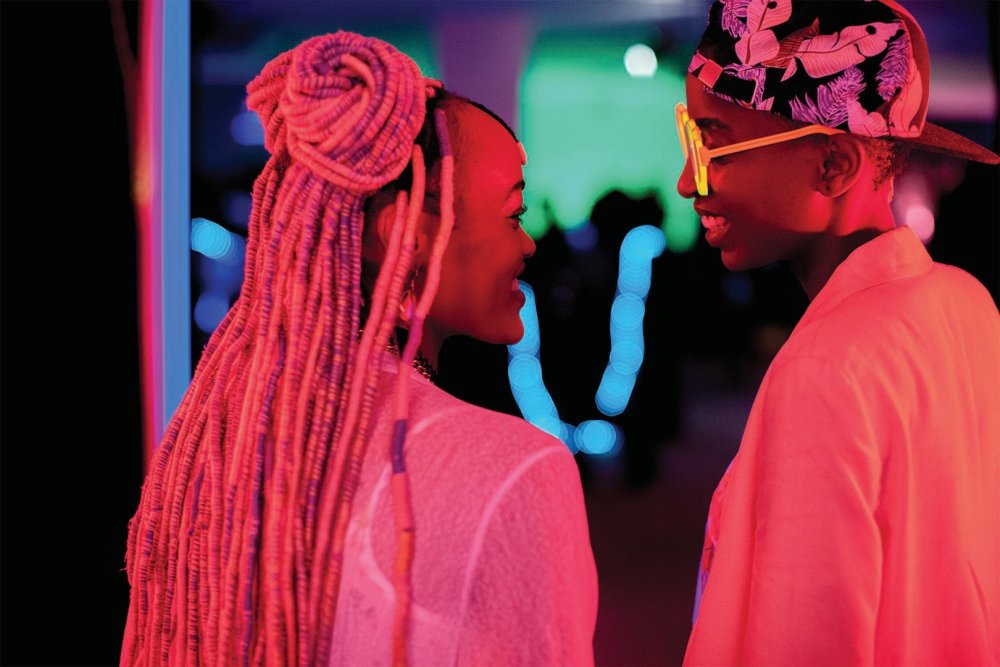
Rafiki (2018)
During the 2010s, on-screen representation of lesbian, gay, bisexual, trans and queer (LGBTQ+) lives and experiences proliferated, both along queer circuits and in the mainstream. Within this broadly progressive development, however, lie multiple nuances, tensions and concerns.
Preceding cycles of queer work included the exuberantly confrontational experimentation of New Queer Cinema and the subsequent turn to ostensibly reassuring genres such as romantic comedy. This past decade has been notable for a rise in work exploring the rich granularity of everyday queer life, present and past. Andrew Haigh’s Weekend (2011) heralded a wave of new realist contemporary drama, unpacking lived queer experience in a world tending to legal equality while remaining socioculturally hetero-supremacist (see also Pariah, 2010; God’s Own Country, 2017). Meanwhile, the generative richness of the queer past was foregrounded in waves of period dramas (Pride 2014; Carol, 2015; 120 BPM, 2017), archival documentaries (United in Anger: A History of ACT UP, 2012; I Am Not Your Negro, 2016) and works about older LGBTQ+ people (Love Is Strange, 2014).
If non-disabled cis white male lives in the global north have remained over-represented, wider visibility has slowly increased too, through occasional breakout titles such as Tangerine (2015) or Rafiki (2018) and also through the proliferation of queer film festivals and online platforms. This has led to some formulaic work (including a miserablist tendency) but also enabled bold, disruptive and uncontainable forms of experiment and pleasure on queer terms.
The situation in mainstream representation has been more mixed. Garlanded works about LGBTQ+ subjects have mostly been made by straight filmmakers (Blue Is the Warmest Colour, 2013; Moonlight, 2016), raising questions about industry practices; or have been embraced despite their normative or even regressive politics, perhaps affirming ongoing hunger for representation of any kind (The Danish Girl, 2016; Call Me By Your Name, 2017). This is most clearly visible in the demeaning game of peekaboo around LGBTQ+ representation in blockbuster franchises and global-tentpole pictures. In terms of everyday representation in mainstream entertainment, television has far outpaced cinema.
Meanwhile, queer filmmakers have been exploring conventionally mainstream terrain with tantalising forays into fantasy, science fiction and horror (Codependent Lesbian Space Alien Seeks Same, 2011; Stranger by the Lake, 2013; Good Manners, 2017). These genres’ capacity to engage trauma and utopia in accessible, transporting ways at times of upheaval might point to thrilling things to come.
— Ben Walters
☞ Film of the week: Pride
☞ Stranger by the Lake review: Alain Guiraudie’s spellbinding erotic mystery
☞ Look back in wonder: FLARE 2016 critics’ roundtable
R is for reflexive documentaries
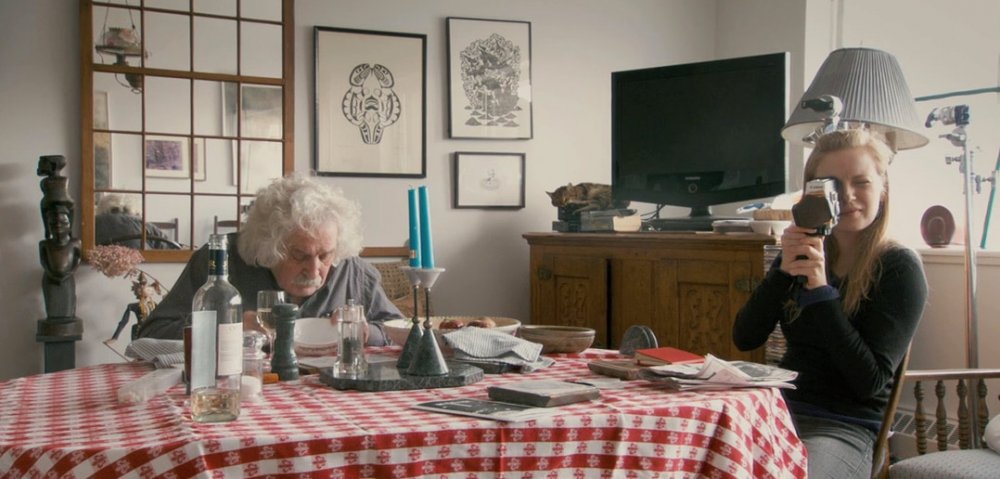
Director Sarah Polley on screen in Stories We Tell (2012)
Breaking the fourth wall – querying or queering the mechanisms of cinematic address – has always been a strand of documentary as much as fiction films, at least as far back to Dziga Vertov’s meta city symphony Man with a Movie Camera (1929); but with the spread of image-making into so many hands this decade, the need to explore how we talk in movies, and what can be said, has never been riper. (That feeling may have swayed the critics who elevated Vertov’s masterpiece to the top of our 2014 Greatest Documentaries of All Time poll.)
The best of these doc docs were anything but solipsistic. Jafar Panahi jabbed at his Iranian censors with the dissident irony of his smuggled diary cri de coeur This Is Not a Film (2011); Rithy Panh spoke truth to the official lies left to Cambodian film history using clay figurines in The Missing Picture (2013). Building on Panh’s earlier encounter with genocidaires S21: The Khmer Rouge Killing Machine (2003), Joshua Oppenheimer spent several years collaborating with a cohort of film-loving executioners of Indonesia’s 1965 anti-Communist bloodletting to probe their fear and denial in The Act of Killing (2013); the gruesome, provocative result was a controversial sensation, and challenged us all to question the stories we tell ourselves, not least through the seductions of cinema.
The title Stories We Tell had already been taken, though, by Sarah Polley’s 2012 inquiry into her mother’s semi-liberated life, loves and family legacy, a film that, again, shared its process with its audience, not least with a midway reveal of the origins of its archive footage. Robert Greene explored the natures of performance in documentary through a volley of movies – Fake It So Real (2011), Actress (2014), Kate Plays Christine (2016), Bisbee ’17 (2018) – as well as in the pages of S&S. Bill Morrison continued his excavations of celluloid history, notably with the plangent early-history dig Dawson City: Frozen Time (2016), while Ross Lipman hymned the end of physical film in his phenomenological Beckett-in-film investigation Notfilm (2015). And while the many films about other films didn’t always rise to the meta, the best in the booming field of video essays did address the implications of the image abundance that facilitated them.
Meanwhile the formal agility afforded by modern digital video technology was underscored in a trio of erstwhile-scrapbook testimonies (and in two cases testimonials) from formidable, globe-trotting female filmmakers. The late Chantal Akerman and Agnès Varda left us with No Home Movie (2015) and Varda by Agnès (2018); go-to-cinematographer Kristen Johnson arrived as a powerful experimental filmmaker herself with the sublime Cameraperson (2016), a travelogue-tapestry of offcuts and home movie footage that asked us to reach with Johnson across the lens and expand the range of our emotional intelligence.
— NB
☞ Watching the watchers: how Cameraperson enriches the act of filming
☞ Build my gallows high: Joshua Oppenheimer on The Act of Killing
☞ Chantal Akerman, guiding light
☞ The masks of Agnès: Varda’s self-portraits and performances on screen
S is for Syria
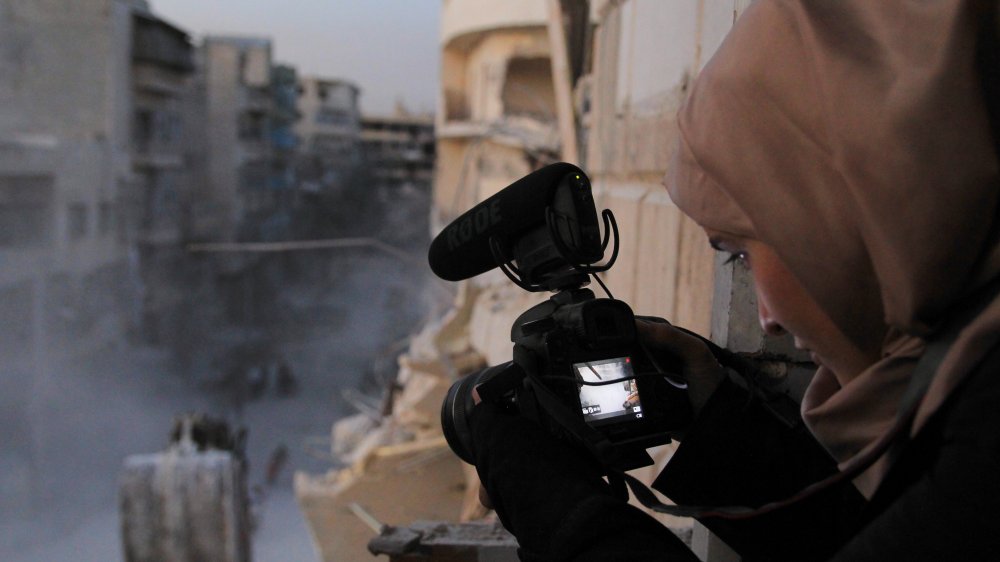
For Sama (2019)
Where the decade began with paeans to Hope and Freedom resounding from Washington and Silicon Valley to help kindle the Arab Spring, the interminable inferno of Syria’s ensuing civil war has been the sourest kind of blowback, spilling out across continents and darkening the politics of the West – to say nothing of its pain and tragedy for Syrians themselves. As with the Spanish Civil War before it, Syria’s has shattered lives and dreams, and drawn artists to record and express the anguish, this time not just in words and photos but notably with the moving image. And what marked these movies was not just their quantity – though that stood in contrast to the relative silencing of protesting voices from other oppressed countries where the shutters came back down – but that local filmmakers took the lead while the West stepped back.
Not always – Britain’s Orlando von Einsiedel won an Oscar for his reportage short The White Helmets (2016), while Philippe Van Leeuw made an unusually early fiction film from the crisis with the besiegement drama Insyriated (2017) – but if Westerners did weigh in, it was usually in concert with insiders. Andreas Dalsgaard helped Syrian former DJ Obaidah Zytoon memorialise her friends’ paths through the uprising in The War Show (2016). Edward Watts co-directed ITN journalist Waad Al Kateab’s For Sama (2019), her memoir of defiant life-saving and life-making under the bombs of Aleppo which has won awards world-wide. Matthew Heineman shaped City of Ghosts (2017), a portrait of undercover citizen journalists’ daring in ISIS-held Raqqa and their drift in exile, though the most potent footage in it was that made by its subjects. And Syrian artist Ramia Suleiman took up the direction of The Long Season, a tapestry of refugee life in a camp in Jordan, when Dutch veteran Leonard Retel Helmrich suffered a stroke.
Of course, the cross-border nature of the conflict has made moot the question of insiders and outsiders – and made a diaspora of much of Syria’s rich ranks of filmmakers, old and new. Homs teacher turned videographer Wiam Bedirxan channelled her footage to Parisian exile Ossama Mohammed for Silvered Water, Syria Self-Portrait (2014). Yasmin Fedda’s Queens of Syria (2014) found resonance in a performance of Euripedes’s Trojan Women by her fellow female refugees in Jordan, while Soudade Kaadan shot her magic-realist fiction of a mother sundered from her son The Day I Lost My Shadow (2018) across the border in Lebanon. By contrast Dutch-Kurdish filmmaker Reber Dosky returned to his birth country to film the fight against ISIS in Radio Kobanî (2016). Sean McAllister embedded himself deeply enough into the action of A Syrian Love Story (2015), his portrait of a couple first driven into exile, then wrenched apart, that he himself spent time banged up in an Assad jail. Talal Derki danced and battled with hometown friends in Return to Homs (2013), then slipped into Nusra Front territory for the radicalisation portrait Of Fathers and Sons (2017); he now resides in Berlin. Feras Fayyad filmed the White Helmets in Last Men in Aleppo (2017), and Ghouta’s female chief doctor in The Cave (2019), and otherwise watches the fate of his country from Copenhagen. (And while he’s been nominated for a second Oscar, he can’t get a US visa to campaign for it.)
Meanwhile the Rojava Film Commune set about training a new generation to film and foster the democratic revolution that blossomed after the defeat of ISIS in Kurdish northern Syria – an echo of the short-lived experiments in participatory democracy during the Spanish Civil War that George Orwell recorded in his 1938 Homage to Catalonia. Their films are only beginning to emerge, while the war rages on.
— NB
☞ Syria on screen: how have movies represented the crisis?
☞ “There is no Syrian cinema”: Syrian filmmakers since the civil war
☞ For Sama review: a mother-and-daughter’s-eye view of the devastation of Aleppo
☞ The Cave review: a painterly portrait of Ghouta’s last, unwavering doctor
T is for Twitter
It’s unofficial, unelected, unabashed and largely unregulated, but Film Twitter got serious in the 2010s. Why, you might ask, would film-lovers turn to magazines or newspapers to get the scoop on the latest releases, when critics are voicing their opinions for free in 280-character gobbets on Twitter? And if you’re a critic, why would you want your words to be hidden behind cover prices and paywalls when you get to become part of The Conversation so easily? The seemingly boundless hunger for debate and in-jokes means the online discourse is fast and often furious: a lapse of judgment in a casual tweet is condemned as a Bad Take as swiftly as hitting the retweet button helps boost a bon mot to viral status.
For many the real boon of Twitter is that filmmakers and stars are on there too – and just a @-tag away from reading your own wise words. The idea of immediate access to celebrities may be an illusion, though, with assistants managing accounts for their bosses. More worryingly, rather than thoughtful questioning, too many anonymous users fill the air with obscene abuse and lethal threats.
Twitter’s advantages are balanced out by its downsides. Trailer reactions and punning wordplay offer fun and games only until the cancellation notices arrive, or someone realises they are giving away their sharpest words for no payment. And for stressed critics already accustomed to filing reviews at top speed from festivals, the pressure to post an instant opinion as the titles roll can be the final straw. In the end, most of us realise that a 90-minute-plus movie deserves a more considered response than a sentence or two, or even a thread. Twitter works best as a signpost rather than a closed loop.
— PH
☞ Lost in the filters: social media past and present at Oberhausen
☞ “Obviously, we live on screens”: how streams and online chat become films
☞ Disconnect my skin: The Great Hack visualises surveillance capitalism
☞ Sight & Sound on Twitter
U is for universes
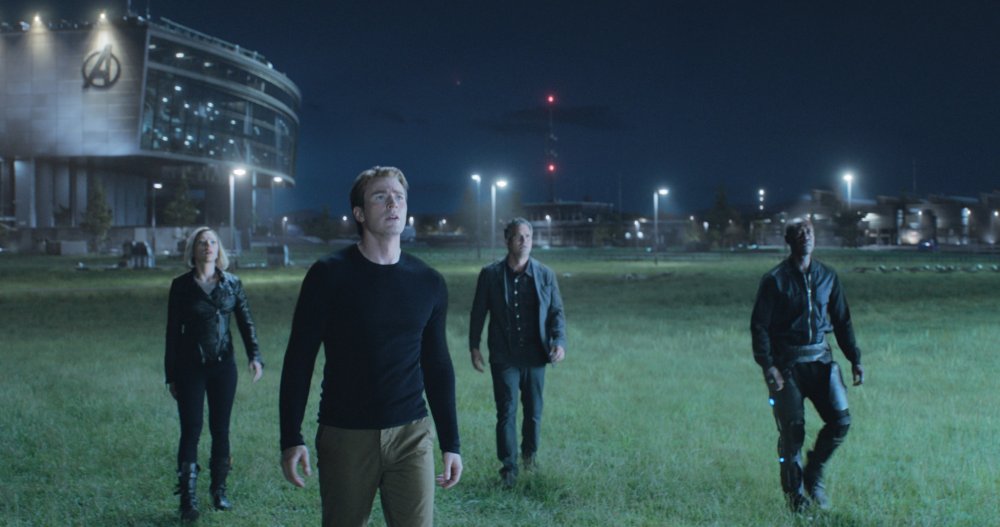
Avengers: Endgame (2019)
The Marvel Cinematic Universe had its official Big Bang Event with Iron Man (2008) and has been expanding ever since. Its success inspired other studios to try similar multi-film/multi-series/braided cross-platform intersectionality and gotta-collect-them-all profitability. So far, there have been more false starts (King Arthur Legend of the Sword hasn’t led to an Expanded Arthurian Universe) than effective rivals. Warners’ hit-and-miss DC universe (beginning with Man of Steel, 2013) is upstaged by non-series films like Joker, and their Monsterverse (beginning with Godzilla, 2014) hasn’t quite caught fire (though King Kong vs Godzilla is in the works). The jury’s out on whether Fast & Furious Presents Hobbs & Shaw is just a spinoff or the launch of an expanded F&Fverse.
Disney, who bought into the MCU well after it was established, have also taken over the Star Wars franchise, which George Lucas originated at Fox, and done their best to rebrand Lucas’s galaxy far, far away as another layer of their theme park-friendly multiverse – which, thanks to the takeover of Fox, spans everything from the Disney princesses, who got their own team-up tryout in Ralph Breaks the Internet, to the Alien-Predator-Prometheus evil-out-there franchise.
The death a-borning of Universal’s Dark Universe with The Mummy (2017) is ironic in that the studio accidentally invented the shared universe format. Crossovers and team-ups go back in literature/myth to antiquity, when Jason signed Theseus and Hercules up as Argonauts, and early silent Sherlock Holmes movies had the sleuth face the Invisible Man, Raffles and the Orang-outang from Poe’s Murders in the Rue Morgue. However, the key film in the evolution of the cinematic universe is Universal’s Frankenstein Meets the Wolf Man (1943), mixing monsters who had already had solo vehicles. Dracula was added for House of Frankenstein (1944) and in Abbott and Costello Meet Frankenstein (1948) the Invisible Man showed up in the sort of coda Marvel now run after the end credits.
Other studios tried team-up or versus movies. Toho’s kaiju series – beginning with an earlier Godzilla (1954) – has run to multiple monsters and reboots. Before the MCU, Marvel Comics were mined in Fox’s X-Men and Sony’s Spider-Man series – including spin-offs, reboots and crossovers – and there was an MCU false start in Ang Lee’s not-quite-canon Hulk. The difference between the precursors and what Marvel/Disney have done is that the MCU was planned from the outset as a multi-film project. It remains to be seen whether anyone will match the trick.
— Kim Newman
☞ Avengers: Endgame review: the finale these heroes deserve
☞ Tenderise the night: Zack Snyder v the raw world
☞ Kong: Skull Island review – a roaring pulp mash-up
☞ Star Wars: Episode IX – The Rise of Skywalker review: new hope springs eternal
V is for Agnès Varda

Agnès Varda at BFI Southbank, 10 June 2018
Agnès Varda’s impact on the decade that was cannot be measured simply by the two films she released in the 2010s: Faces Places (2017, co-directed with JR) and the career retrospective Varda by Agnès (2019). Before the first of those titles came out, Varda was having a resurgence, as feminist writers who were shifting the critical conversation to include rather than marginalise films directed by women frequently invoked her name and work – to take one example, the film journal Cléo was christened after her Cléo from 5 to 7 (1962).
As if Varda instinctively understood the place she held in the hearts of her audience, she made herself joyously visible, as an avatar of feminist cinema, in the runup to the release of Faces Places – from her Instagram account to accepting an honorary Oscar by twirling on stage with Angelina Jolie. Speaking of Oscars, she became the oldest ever nominee for the same film, and the viral hit of the nominations luncheon, simply by sending a cardboard cutout in her place.
In 2018, crowds of devotees attended the retrospectives of Varda’s work and speaking engagements surrounding the release of Faces Places, underlining the fact that her films were just as vital and beloved as ever. Then in 2019 her final film debuted to great acclaim in Berlin. Varda had looked back at her own life and career on film before, notably in The Beaches of Agnès in 2008. But this time it really was farewell rather than au revoir – Varda passed away on 29 March 2019.
— PH
☞ At home (and away) with Agnès Varda
☞ Impressions of Agnès: Varda impresses London
☞ Agnès Varda obituary: a luminous art of an illuminated life
☞ Seven facets of Agnès Varda
W is for weather
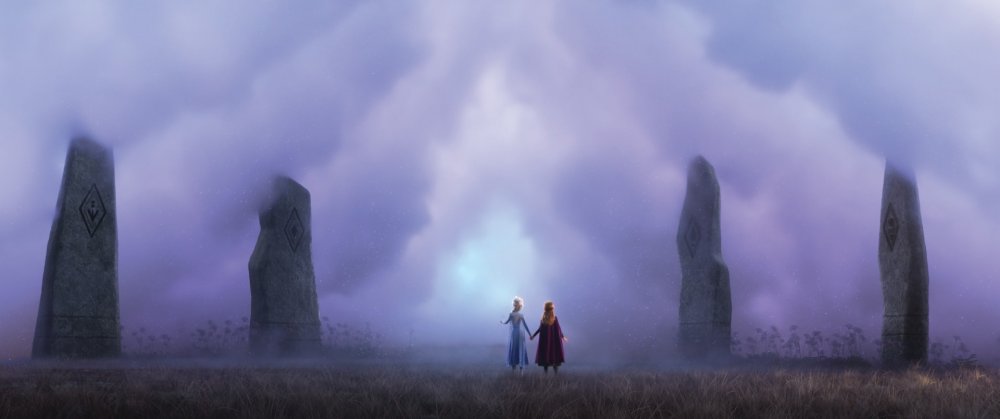
Something of a glaring absence from our screens: as the world’s temperatures ticked up this decade, and scientific warnings of impending climate chaos began to cohere as present-day brute facts, the movies did not seem to be the go-to art form for consideration of our oncoming disastrous meteorological abnormal. Was Hollywood in thrall to the same denial that afflicts our news and politics, or was it no longer certain it could glean escapist thrills from what once seemed safely distant conjecture?There were exceptions. The 1980s daddies of dystopian sci-fi produced sequels to reiterate their scorched-earth visions in Mad Max Fury Road (2015) and Blade Runner 2049 (2017) – whose burnt-out Las Vegas DP Roger Deakins modelled on the look of actual dust-storm Australia. Matthew McConaughey abandoned a parched Earth-scape in Interstellar (2014), whereas Gerard Butler mercifully stuck around to save us from some kind of hubris – technological or political – in Geostorm (2017), a climate-change exploiter to revive the spirit of The Day After Tomorrow (2004). Ari Folman’s The Congress (2013) and Jim Jarmusch’s The Dead Don’t Die (2019) both jibed at our reality-disdaining capture by cyber-doodads of mass distraction, while nature wept.
But documentaries also struggled to get a fix on the variables and intangibles of altered climate. Jeff Orlowski made simple use of film’s time-changing powers to condense a longer view of retreating nature in Chasing Ice (2012) and Chasing Coral (2017), while the BBC’s Planet Earth and Blue Planet sequels (2017 and 2017-18) went wide. We also got human-eyed views on the struggle to correct course in The Island President (2011), Before the Flood (2016) and An Inconvenient Sequel: Truth to Power (2017), while Merchants of Doubt (2014) looked at the tactics of the stallers and deniers.
For art about the human experience of life on a changing planet, though, 2019 seemed to be the year the dam broke. The Hottest August and Swarm Season made a pair of atmospheric community portraits (New York-urban, Hawaiian-rural) that were both pregnant with the possibility of colony collapse. Viktor Kossakovsky’s globe-trotting symphony Aquarela bowed before the power and fury of water, while Parasite conjured a Biblical rain heavy with class injustice. The floods of old 1990s/2000s cinematic forebodings – Waterworld, the ending of A.I. Artificial Intelligence – also fell over present-day Tokyo in Weathering with You, a young-adult anime addressed to the same post-millennial generation that finds itself burdened with post-colonial clean-up and restitution in Disney’s Frozen 2.
☞ Generation snowflake: Frozen II and the quest for climate justice
☞ Aquarela review: the shifting shape of water
X is for Gen-X nostalgia

Ready Player One (2018)
Stranger Things, event-cinema screenings of Back to the Future, binge-watching Friends on Netflix and vintage arcade games in craft beer bars: all pop-cultural proof that the children of the baby boomers are entering middle age. In other words, Gen-X nostalgia is booming.
It’s hardly relevant that growing up in the era of blockbusters and personal computers was objectively not as thrilling as the progressiveness and tumult of the rock ’n’ roll years. Nostalgia is a powerful force, and while genuinely Gen-X directors such as J.J. Abrams are happy to dig through the debris of their own youth with such rose-tinted titles as Super 8 (2011), no one is more adept at marshalling it than the producers of the demographic’s most pivotal cinema, chiefly George Lucas and Steven Spielberg. Where Lucas’s Star Wars saga has been a five-decade long project in sustaining a moment of childhood pleasure, Spielberg’s Ready Player One joins the revival of his Jurassic Park franchise to swell the sense that this was the decade in which the geeks of the 80s inherited the multiplex all over again.
However, as the 2016 trolling of the distaff Ghostbusters proved, woe betide the executive who reboots a Gen-X favourite without remembering that this affection is a very possessive kind of love, and girls are rarely allowed to play with the boys’ toys.
— PH
☞ Ready Player One review: Spielberg’s VR throwback
☞ Captain Marvel review: 90s nostalgia grounds Marvel’s cosmic drifter
☞ The Souvenir first look: Joanna Hogg’s potent self-portrait as a young artist
☞ Deep focus: The other side of 80s America
Y is for YouTube
You know the numbers: hundreds of hours of video uploaded every minute; billions of hours watch every year. YouTube is no longer the scrappy upstart of its first half-decade, server of cat videos and other home-brew oddities and recipient of massive lawsuits from the Hollywood studios; it may no longer even be cool; but in terms of the attention economy it dwarfs the offline cinema industry. In 2012 Gangnam Style became the first upload to break one billion views; there’s now a club of multi-billion-played videos, in which A-list pop stars rub shoulders with a new breed of native star – the YouTuber. Live-stream gamers earn millions in ad-revenue sharing from their living room; the hosts of unboxing videos goggle children with endless loops of acquisitive bliss; advertisers are beginning to weigh top YouTubers’ influence favourably to that of traditional movie and music stars.
It’s not just a weird-shit takeover, though; like the rest of the internet, YouTube is now embedded in the offline world. Hollywood now sees the platform safe to rent its wares on, and every movie marketing campaign has a YouTube component. To creators and performers with aspirations to non-digital stagecraft, YouTube now offers physical studio facilities. Talent scouts are using the site as the 21st century equivalent of local theatre and comedy clubs, and a first wave of YouTuber – Bo Burnham, Issa Rae, Rapman – is already breaking out of the site. Meanwhile fans and critics both amateur and pro are learning new tricks and sharpening their tools on the site.
Piracy may have been driven out but YouTube still has its opponents. From the outside, the site seems to be as guilty as any attention-seeking social media site of designing in user addiction, and boosting fear, loathing and other reptile-brain responses in its recommendation algorithm. Nor have its user comments become any more of an advertisement for humanity. From the inside, the site and its revenue-share programme have increasingly been accused of a prudish straight bias that downgrades and deprives minorities (the hashtag #YouTubeIsOverParty began surfacing in 2016). And the site’s decision to police copyright at scale via machine rule has proved a predictably blunt tool with frustrating implications for fair use quotation and criticism. But who will blink at the second biggest site on the internet?
— NB
☞ Sight & Sound on YouTube
☞ Millennial filmmakers peer ahead
☞ The best video essays of 2019
Z is for zoography
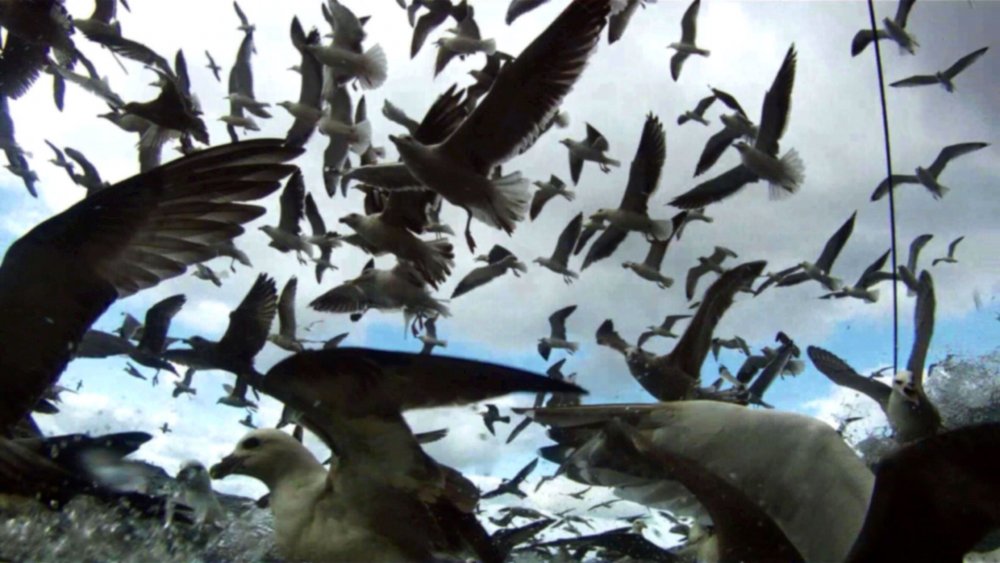
Leviathan (2012)
130 years after Eadweard Muybridge mapped the running motion of a horse with his proto-cinematic zoöpraxiscope invention in 1879, movies have been revisiting their origins, with a keen eye to revising the ethical relations between human viewers and other-than-human beings on screens. The decade opened with both Anat Pick’s germinal 2011 study Creaturely Poetics: Animality and Vulnerability in Literature and Film and Ang Lee’s Life of Pi (2012), structured around so-called ‘live action’ animals both motion-captured and computer-generated, digital replacements that both disguise and replicate the present brink of extinction.
Two remakes of The Jungle Book and a remake of Doctor Doolittle (2020) have followed. Similarly dominated by villainous tigers, they do little more than reanimate imperial animal analogies and anxieties. By contrast, the realism of other-than-human lives marks a wave of innovative, independent British debuts that attend to agricultural entanglements between species, and with specific landscapes, as they face political and economic threats: Somerset dairy farming in The Levelling (Hope Dickson Leach, 2016), Yorkshire sheep farming in God’s Own Country (Francis Lee, 2017), and Cornish lobster fishing in Bait (Mark Jenkin, 2019).
Documentary has sought to complicate human-animal interactions by challenging the mode’s anthropological heritage. The Harvard Sensory Lab, directed by Lucien Castaing-Taylor, situates the human, and human-made, alongside and among animal beings, most strikingly in Sweetgrass (Castaing-Taylor and Ilisa Barbash, 2009) and Leviathan (Castaing-Taylor and Verena Paravel, 2012). Becoming Animal (2018), an immersive documentary by Emma Davie and Peter Mettler, uses a heightened sensorium to bring the viewer into other-than-human being in the multispecies ecology of Grand Teton National Park.
Transnational documentaries Taskafa (Andrea Luka Zimmerman, 2013) and Kedi (Ceyda Torun, 2016) both took to the streets of Istanbul to witness, from the perspectives of stray dogs and cats respectively, the threat of disappearing public space, as did the Chilean Los Reyes (2018) in a Santiago skate park. Animal lives on film point to the interconnected life and liveliness of the planet as a whole, at the very moment it is threatened with ending.
— SM
☞ Video essay: The animal menagerie of Rhythm and Hues
☞ Leviathan review: a wet and wild documentary like nothing you’ve seen (or felt)
☞ Your world inside out: ¡Vivan las Antípodas! and Kossakovsky’s Ten Rules
☞ Coral: ReKindling Venus review: life is the bubbles
-
The 100 Greatest Films of All Time 2012
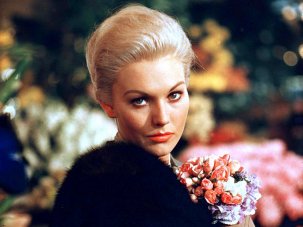
In our biggest ever film critics’ poll, the list of best movies ever made has a new top film, ending the 50-year reign of Citizen Kane.
Wednesday 1 August 2012
-
The Digital Edition and Archive quick link
Log in here to your digital edition and archive subscription, take a look at the packages on offer and buy a subscription.




